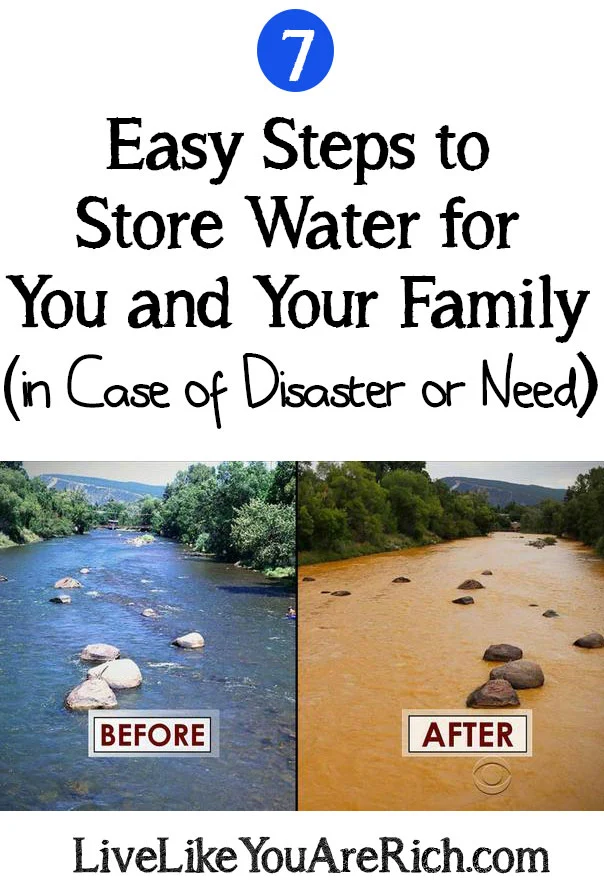 Water storage is vital in many predicaments. A year ago a serious flash flood hit my sister’s little community. Homes were flooded, the highway disappeared, and a nearby dam was threatening to break. It was scary.
Water storage is vital in many predicaments. A year ago a serious flash flood hit my sister’s little community. Homes were flooded, the highway disappeared, and a nearby dam was threatening to break. It was scary.
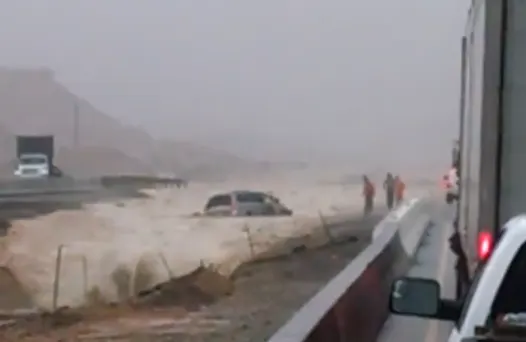
My sister’s water could have been shut off at any minute. Knowing that she and her family had water storage was really comforting to her. More about her experience here.
The human body cannot go long without water. It’s devastating to think how many people struggle to get by without water when major incidents occur.
For example, just last month the EPA had a disastrous mine explosion which spilled over 3 million gallons of toxins into the Animas and San Juan rivers. These rivers are needed by many people including thousands of American and Native American families, many farmers, and businesses. The rivers were filled with toxic amounts of lead, copper, arsenic, and a lot of scary things.
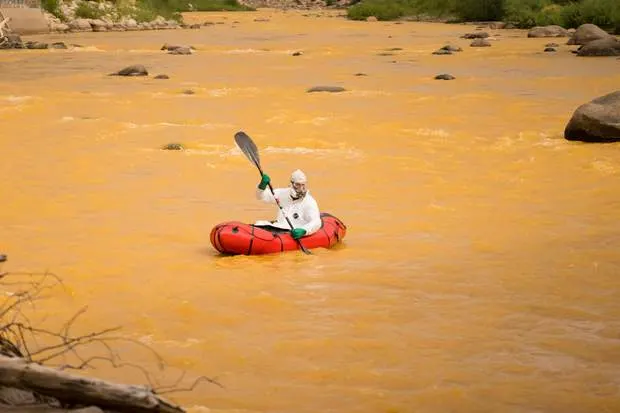
For the families that did not have running water, purchasing water became more difficult to do. Many who had running water were fearful their supply would be turned off or run dry as well. These people’s homes lost a ton of water pressure as clean water was being taken and distributed to those who could no longer get water elsewhere.
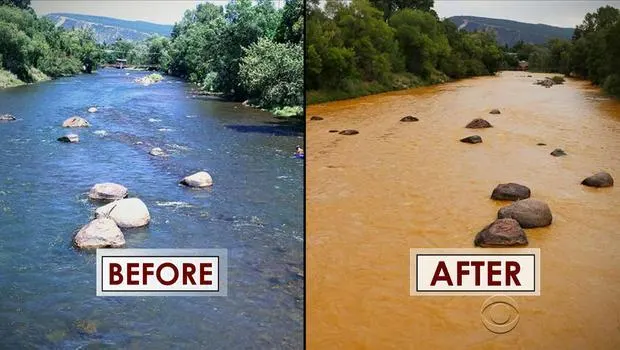
Although the Animas and San Juan rivers are running clear again, the toxins have rested on the river beds or have run into Lake Powell (which is the source of drinking water to many states). It was and still is an enormous disaster!
In the space of two years my sister and her community and some Native communities were both effected by incidents which led to a threat of or real loss of drinking water.
You don’t have to be a ‘dooms-dayer’, or even serious ‘prepper’ to realize that having additional water on hand isn’t a bad idea. I highly recommend everyone have drinking water stored.
I put two 55 gallon drums into my storage room (downstairs laundry room that we do not use). It was such an easy process and not too expensive either!
Here’s how to store water:
1- First and most important is to store the water barrels properly. There is some controversy on this, but if you are storing your water on cement flooring make sure to put the water drums/barrels on wood 2×4’s, a pallet, really thick carpet, or something substantial to separate it from cement (this prevents leeching). Even though the experts say leeching only occurs on cement that gets hot, we decided to raise it (and our food) up anyway. Also, try to store the drums out of direct sunlight and in a spot that has somewhat consistent temperatures. Keep away from stored gasoline, kerosene, pesticides, or similar substances.
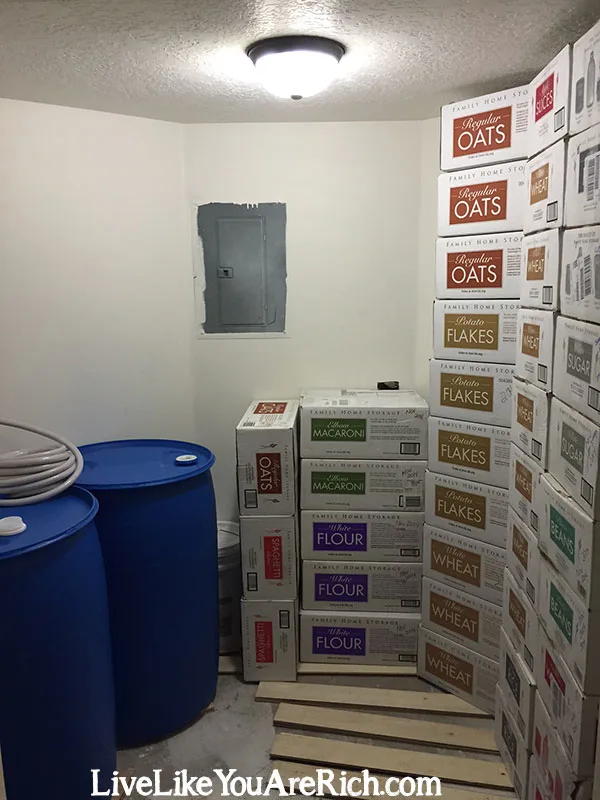
2- Another important tip is to buy a drinking water hose. Regular garden hoses can contaminate the water. Use a drinking water hose!
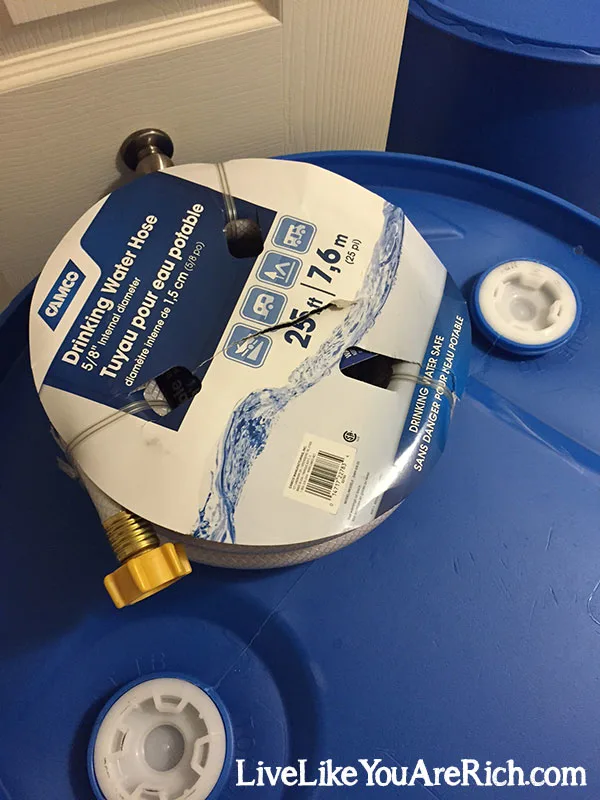
3- Buy clean new barrels. We were trying to be thrifty so a few years ago we bought barrels that had had lemonade in them. We couldn’t get them very clean so we ended up not being able to use them. I’d recommend just buying them new. You can find 55 gallon drums on emergency preparedness sites like this one, or on Amazon here. Or you can buy them from grocery stores—and often for cheaper. We also looked on the classifieds. Everyone who was selling them new lived quite a ways away. So we got them at Macey’s grocery store for $39.00 each.
4- Rinse them out with just water. Do NOT use soap.
5- Connect hose to clean water, open both tops and begin to fill. If you don’t have a water connection in the same room that you want to store your water, getting a 25′ drinking water hose or two would enable you to bring the water in from an inside or outside tap (by running the hose through a door or a window).
6- Check on the water every ten or so minutes. Once the water is getting close to the top monitor it constantly. Turn it off an inch or so before it gets to the top. Close both tops on the drum tightly.
7- Write the date you filled it on the top or side of the drum with a permanent marker.
That’s it! There’s no need to add bleach or anything else as long as the water barrels were clean and filled with drinking water, there is no need to boil or treat it when you need it.
As you can see, afterwards, we put our rotating food storage shelf back into our storage room and are even using the barrels as shelves themselves.

As long as you follow these seven steps correctly (especially on how to store the water), your water storage should last a VERY long time, many sources say it can be stored indefinitely. We plan to rotate ours (if we don’t use it) with our dry food storage which will expire in 28 years.
Tip- Water that sits for long lengths of time becomes slightly stale and not very good tasting. If/when you use it, if you pour the water back and forth into different containers (adding oxygen to it) it will become more palatable.
Final Tip- If you do not have room for 55 gal barrels, start off storing a few 5 gallon water drums.
Having some water is much better than none.
For other ‘living rich’ and financial tips subscribe, like me on Facebook and follow me on Pinterest.
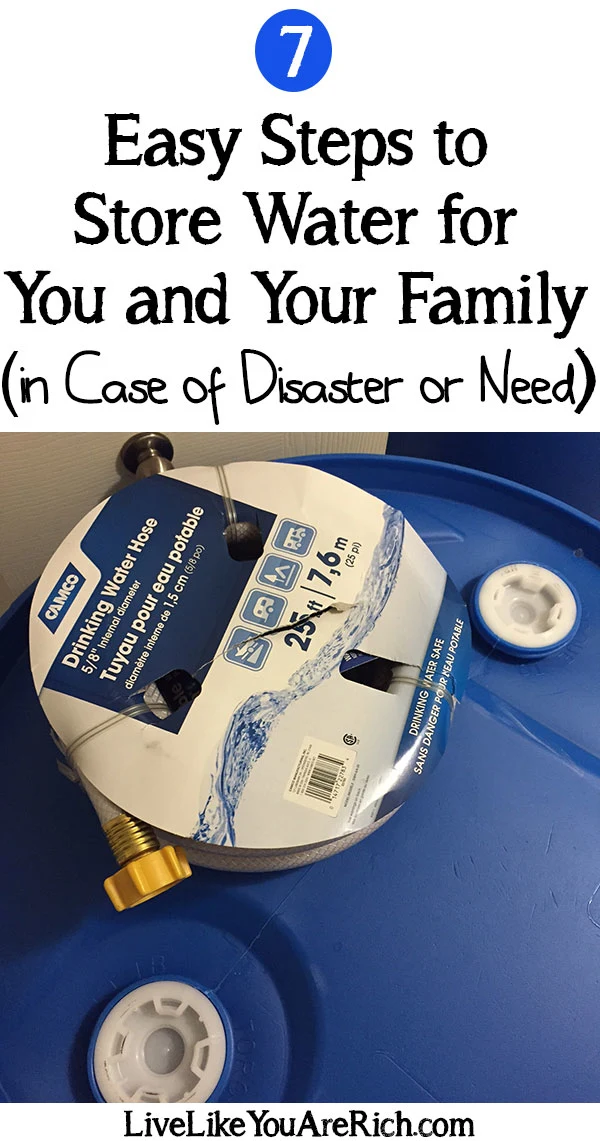



ronrogers
Saturday 19th of August 2017
That was an amazing option
HD Restoration
Wednesday 12th of October 2016
That was an amazing option for homeowners to survive when there is a shortfall of water. That's amazing tips you have provided to keep saving water for an emergency use.
canned water
Saturday 13th of August 2016
That an amazing post. Keeping water in stock is really a good option which helps in any emergency. I have practically did this and i always keep water in stock so that i can easily face any emergency.
Anita Fowler
Monday 22nd of August 2016
Thank you for stopping by.
Lucinda Nutting
Wednesday 20th of January 2016
I LOVE this post. I always wanted to keep a supply of water in case of emergencies, but never knew this option was viable. I also LOVE the supply of food you have and how large each quantity is. What brand are the boxes of flour, oats, macaroni, etc.?
Chelsea @ Life With My Littles
Thursday 1st of October 2015
This is such a helpful post! We had some water stored when we lived in Iowa, but it was in the garage and our containers burst when it froze during the winter. People know about food storage but I think a lot forget about water!
Anita Fowler
Friday 2nd of October 2015
Oh I'm sorry your containers burst. We were thinking of storing ours int he garage and putting them on the house side of the wall (the wall that is heated) with a big heavy blanket over top...but we weren't sure if they would freeze or not so we decided not to do it. Inside is best but many people don't have the room. So storing smaller containers would work. Thanks for sharing your experience!